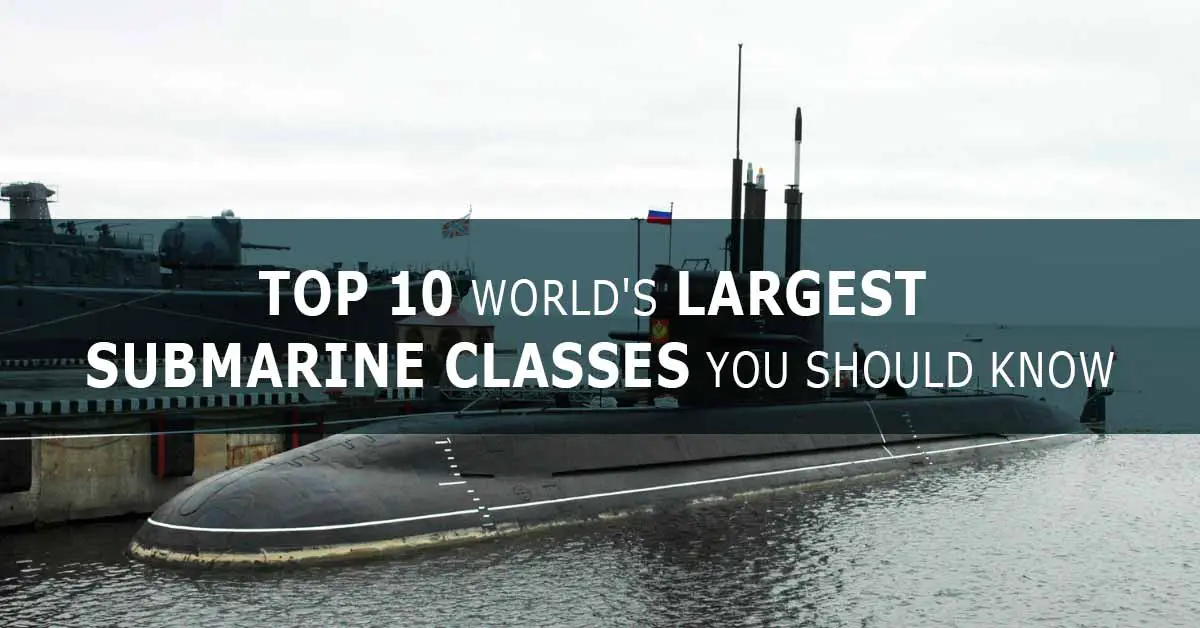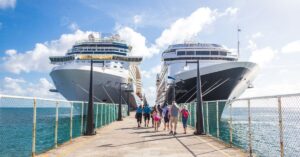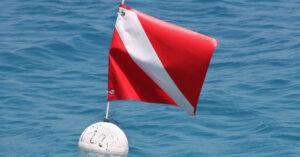Submarines are typically used for military purposes by different countries. However, a few submarines are also used for other purposes like marine research and recreation purposes. These submarines are comparatively small and cannot go beyond a certain depth (marine research submarines may be capable of higher depths).
What are the common submarine types?
The submarines used by the military can be of the following types:
- Attack submarines.
- Ballistic missile submarines.
- Guided-missile submarines.
- Midget submarines.
- Special mission submarines.
Attack submarines
An attack submarine (also known as a hunter-killer submarine) is typically designed for attacking and sinking enemy submarines, merchant ships, etc. Some countries call these multipurpose submarines. They can be nuclear powered or diesel-electric type. Attack submarines can be used for the protection of military surface ships or other submarines. Few attack submarines may be armed with cruise missiles.
Ballistic missile submarines
They are the submarines that have the capability of deploying submarine-launched ballistic missiles with nuclear warheads. The US Navy classifies this with the symbol SSB (SS for submersible ship and B for ballistic) and SSBN (the additional letter N indicates the nuclear-powered submarine). Ballistic missile submarines are difficult to detect for the enemy due to their acoustic quieting feature.
Guided-missile submarines
They are armed with tactical missiles and have superior communications capability equipment. They have the capability of supporting the military strikes on the enemy.
Midget submarines
Any submarine weighing less than 150 tons is called a midget submarine or mini-submarine. A midget submarine is usually operated by 1 to 9 crew members, and it usually does not have on-board accommodation for the crew. The crew members live in the mother ship from where they launch the midget submarine. The midget submarines can be military or civilian type. Military-type midget submarines work with surface ships or submarines called mother ships. Civilian type midgets are called submersibles and usually work with surface ships.
Special mission submarines
These submarines are built for particular purposes like “deep submergence rescue vehicle,” “swimmer delivery vehicle,” etc., and the capacity of such submarines vary.
Related Article: A Complete Guide To Submarines Design And How They Work.
What are the classes of submarines?
One of the methods of classification of submarines is by its class; a class indicates details of the submarine such as who is the builder of the submarine (country), the submarines displacement while in the sea (in tons of water), operating country, and the submarines physical dimensions. The class will also indicate the time of building (during world wars or cold wars).
Some of the world’s largest submarine classes are listed below:
1. TYPHOON Class Submarine
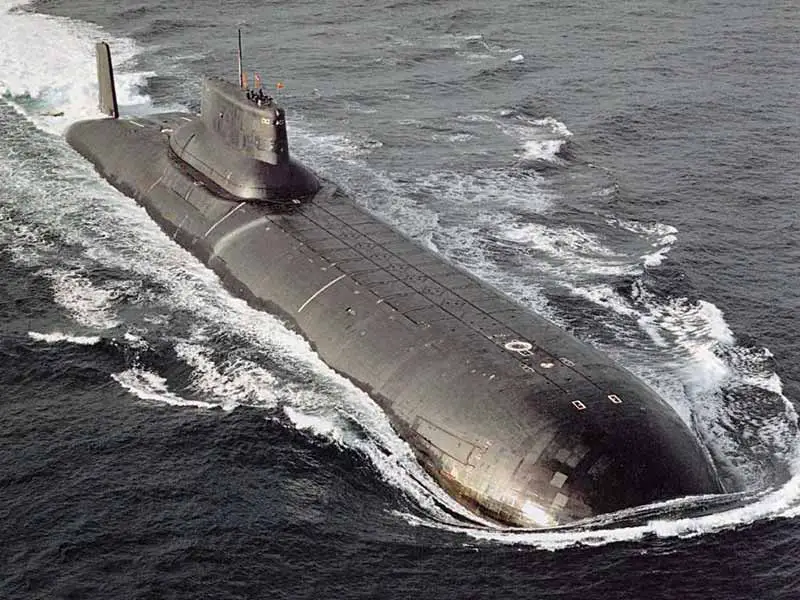
The TYPHOON class is a ballistic missile submarine built in Russia and operated by the Russian Navy and is in service since 1981. This submarine is called “Akula” (meaning shark) in the local Russian language. The approximate length of this submarine is 175 meters and has an approximate displacement of 24000 tons (on the surface) and 48000 tons (submerged). Typhoon class is the largest known submarine. The propulsion of TYPHOON class submarine consists of two numbers steam turbines powered by two numbers nuclear reactors, and the steam turbines, in turn, run two electric generators. The approximate speed of this submarine is 22 knots (25 MPH) on the surface and 27 knots (31 MPH) while submerged, and the submarine can stay submerged underwater for 120 days or more.
This submarine is designed with multiple pressure hulls, and this enables simple internal design, and the submarine can be wider than a typical submarine. This submarine has two long pressure hulls (parallel to each other) in the main body, a third small pressure hull above the two (below the sail), and two more pressure hulls housing torpedoes and steering gear. This design enhances the safety (survivability) of the crew members in the submarine. Even if there is a breach noticed in one pressure hull, the crew in other pressure hulls have a high chance of safety (low chances of flooding).
2. BOREI Class Submarine
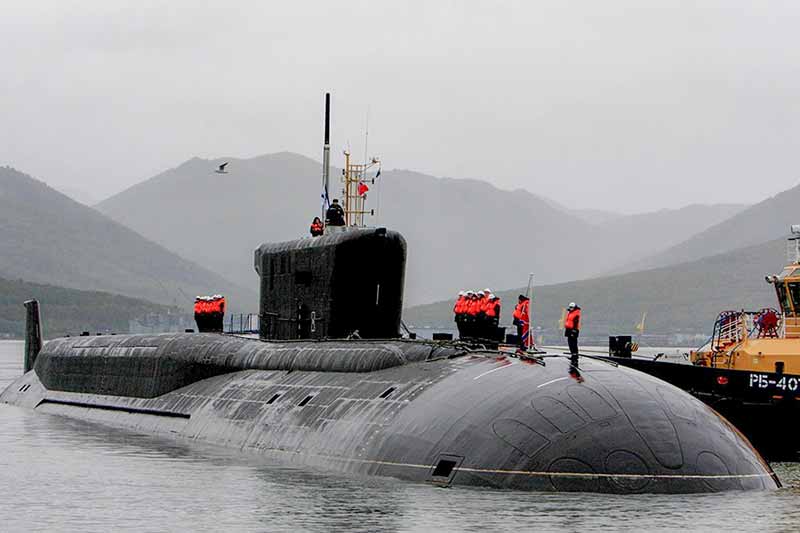
The BOREI class is a ballistic missile submarine built in Russia and operated by the Russian Navy and is in service since 2013. The approximate length of this submarine is 170 meters and has an approximate displacement of 14720 tons (on the surface) and 24000 tons (submerged). The propulsion of the BOREI class submarine consists of one steam turbine powered by one nuclear reactor, and the steam turbine, runs the electric generator. The approximate speed of this submarine is 15 knots (17 MPH) on the surface and 33 knots (38 MPH) while submerged, and the submarine can stay submerged underwater for one year or more (subject to the stock of food).
BOREI class was planned as a replacement for its predecessors Delta (Soviet era) and Typhoon classes; however, compared to the TYPHOON class, BOREI class is much smaller (its size resembles Delta IV class). The design of the submarine includes a hydro-dynamically efficient hull, and this submarine is the first Russian nuclear submarine to have a Water-jet propulsion system.
3. OHIO Class Submarine
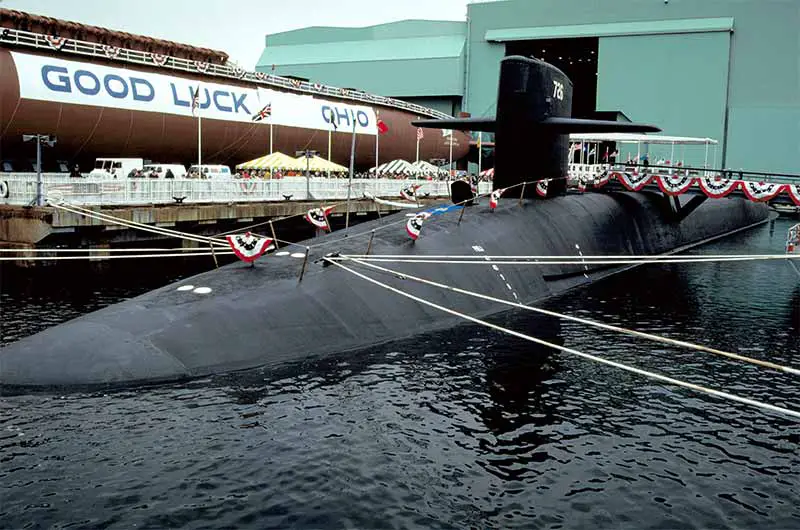
The OHIO class is a ballistic missile/cruise missile submarine built in the USA and operated by US Navy and is in service since 1981. The approximate length of this submarine is 170 meters and has an approximate displacement of 16764 tons (on the surface) and 18750 tons (submerged). The propulsion of the OHIO class submarine consists of two geared steam turbines powered by one nuclear reactor, and the steam turbines, in turn, run the two electric generators. The approximate speed of this submarine is 12 knots (14 MPH) on the surface and 20 knots (23 MPH) while submerged, an approximate depth of 240 meters or more, and the submarine can stay submerged underwater for an unlimited period (subject to the stock of food).
OHIO class are the largest submarines built for US Navy, and they are third in place (just after Russia’s TYPHOON and BOREI class). The gradual replacement of OHIO class with COLUMBIA class may happen at the beginning of 2031. Each submarine of OHIO class functions with two sets of crews (typically named blue crew and gold crew). Each crew manages the patrol of the submarine for 70 to 90 days. When the blue crew completes its petrol of 7.0 to 90 days, the submarine comes to a specified point, and after replenishing the food and other essentials, the gold crew takes over for the next petrol of 70 to 90 days.
4. VANGUARD Class Submarine
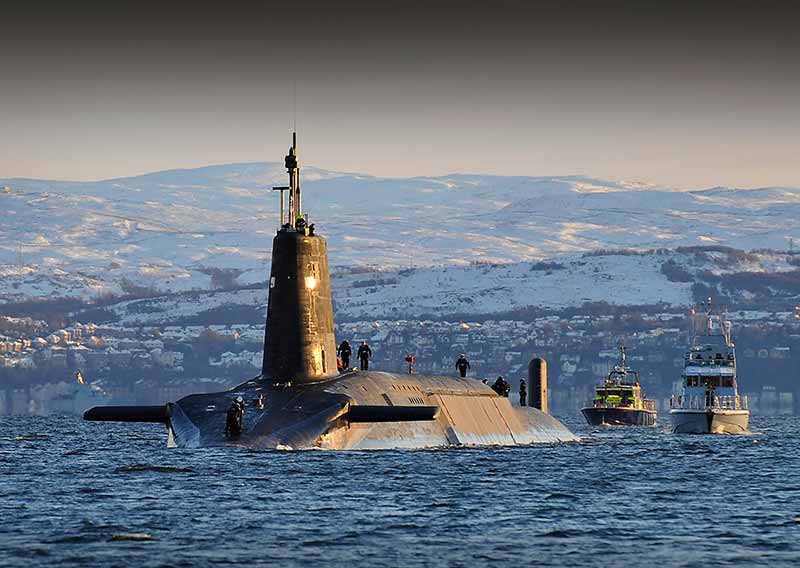
The VANGUARD class is a nuclear-powered ballistic missile submarine built in the United Kingdom and operated by Royal Navy and is in service since 1993. The approximate length of this submarine is 149.9 meters and has an approximate displacement of 15900 tons (submerged). The propulsion of the VANGUARD class submarine consists of two turbines powered by one nuclear reactor, and the turbines, in turn, run the two electric generators. The approximate submerged speed of this submarine is 25 knots (29 MPH). The submarine can stay submerged underwater for an unlimited period (subject to the stock of food and mechanical components, if any). The VANGUARD class is the largest submarine built for Royal Navy.
5. TRIOMPHANT Class Submarine
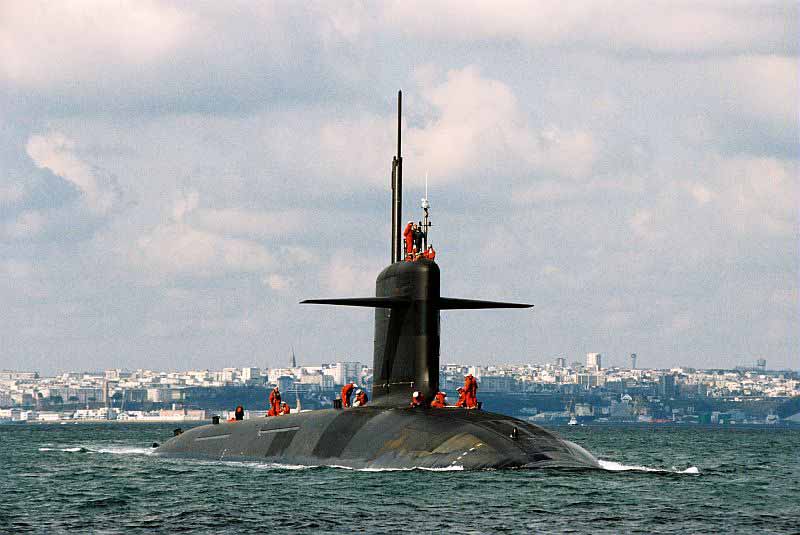
The TRIOMPHANT class is a ballistic missile submarine built in France and operated by the French Navy and is in service since 1997. The approximate length of this submarine is 138 meters and has an approximate displacement of 12640 tons (on the surface) and 14335 tons (submerged). The propulsion of the TRIOMPHANT class submarine consists of one nuclear reactor and two diesel-powered generators as auxiliaries and use a water-jet propeller system. The approximate speed of this submarine is more than 25 knots (29 MPH), and an approximate test depth of 400 meters, and the range is unlimited. This submarine can accommodate 15 officers and 96 sailors.
6. VIRGINIA Class Submarine
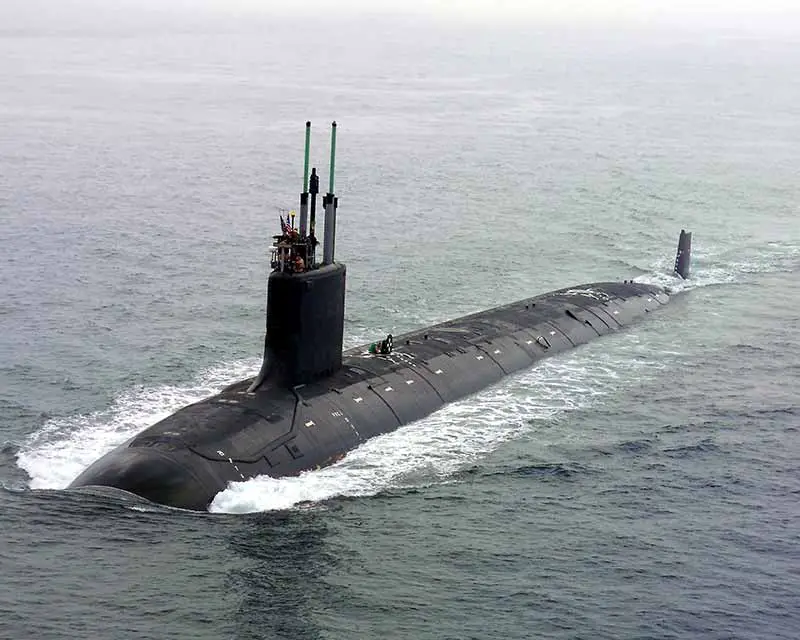
The VIRGINIA class is a ballistic nuclear attack submarine built in the USA and operated by US Navy and is in service since 2004. The approximate length of this submarine is 115 meters and has an approximate displacement of 7900 tons (submerged). The propulsion of the VIRGINIA class submarine is powered by one 30 MW nuclear reactor and uses water-jet propulsions. The approximate speed of this submarine is 25 knots (29 MPH), an approximate depth of 240 meters, and the submarine can stay submerged underwater for an unlimited period (subject to the stock of food).
The VIRGINIA Class submarines are expected to serve the US Navy till 2060. The VIRGINIA class is the first submarine to adopt photonic sensors in place of a customary periscope (photonic sensor works similar to a periscope, however it does not require a periscope tube going through the pressure hull). The photonic sensors are mounted on the mast (pole) outside the pressure hull, and the sensors transmit the signal through optical fibers to the control center. The visual input from the sensors can be displayed on the LCD (liquid crystal display) screens. A periscope needs to penetrate through the pressure hull, resulting in the reduced structural integrity of the pressure hull and increased danger of flooding, and also requires the location of the control room just below the sail. However, photonic sensors eliminate the need of penetrating through the pressure hull, and also, the control room need not be under the sail.
7. COLUMBIA class submarine
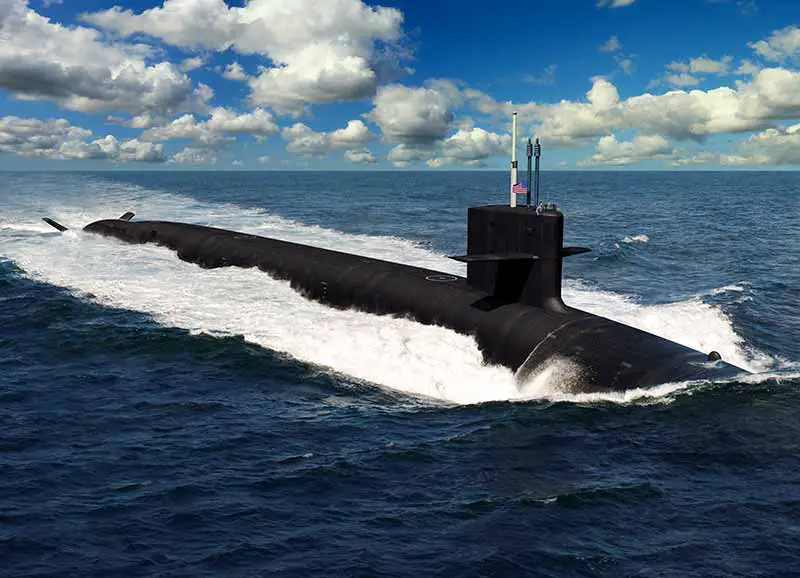
The COLUMBIA class is a ballistic missile submarine being built in the USA as a replacement for OHIO class in US Navy, and construction was started in 2020. This submarine is scheduled to be commissioned by 2031. The designed length of this submarine is 171 meters, and the planned displacement is 21140 tons (submerged). The proposed propulsion of COLUMBIA class submarine is nuclear powered Turbo-electric drive and water-jet propulsions. COLUMBIA class submarine is planned to use many off-the-shelf components and units designed for the OHIO class.
8. LOS ANGELES Class Submarine
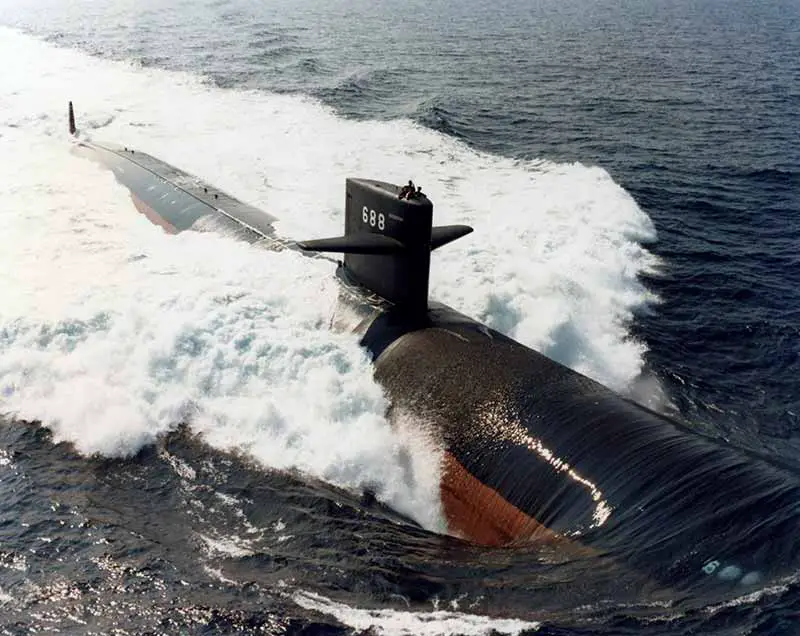
The LOS ANGELES class is a nuclear attack submarine built in the USA and operated by US Navy and is in service since 1976. The approximate length of this submarine is 110 meters and has an approximate displacement of 6082 tons (on the surface) and 6927 tons (submerged). The propulsion of the LOS ANGELES class submarine consists of two steam turbines powered by one nuclear reactor, and the steam turbines, in turn, run the two electric generators. The approximate speed of this submarine is 20 knots (23 MPH) on the surface and 20 knots (23 MPH) while submerged, an approximate test depth of 290 meters or more, and the submarine has an unlimited range (refueling needed only after 30 years).
The LOS ANGELES class submarine has two watertight compartments. The forward compartment houses the crew living area, weapons handling spaces, and non-critical control spaces. The aft compartment houses the majority of the engineering systems of the submarine and equipment for making water. When this submarine is at the surface or snorkeling, it can use the auxiliary diesel generator for power or ventilation in case of an emergency like a fire. Also, during emergencies, the diesel engine can be run with compressed air. LOS ANGELES class submarines are featured in many literary works and motion film adaptations like USS Dallas in “The Hunt for Red October” and in the novel “Red Storm Rising,” etc.
9. ASTUTE Class Submarine
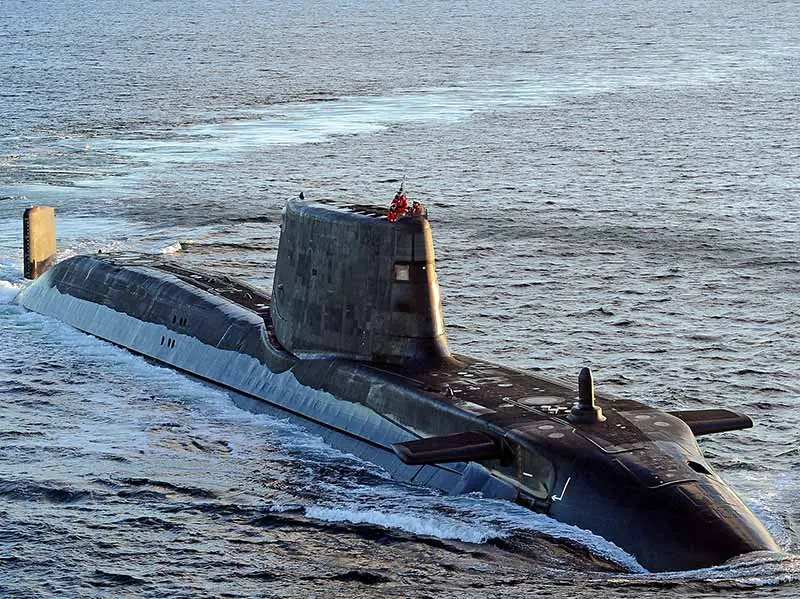
The ASTUTE class is a nuclear-powered fleet submarine built in the United Kingdom and operated by Royal Navy and is in service since 2010. The approximate length of this submarine is 97 meters and has an approximate displacement of 7000 tons (on the surface) and 7400 tons (submerged). The propulsion of the ASTUTE class submarine consists of one nuclear reactor with turbines and generators, 600 KW diesel generators (auxiliary), and water-jet propulsions. The approximate speed of this submarine is 30 knots (35 MPH), an approximate test depth of 300 meters or more, and the submarine has an unlimited range.
This submarine was built using a modular construction concept, and the submarine was built using numerous ring-shaped modules, and the length of each ring was many meters. These modules (rings) were then welded together using suitable techniques. In line with other Royal Navy submarines, the bridge fin of the ASTUTE class has a special reinforcement that allows the submarine to surface through ice caps.
10. AKULA Class Submarine
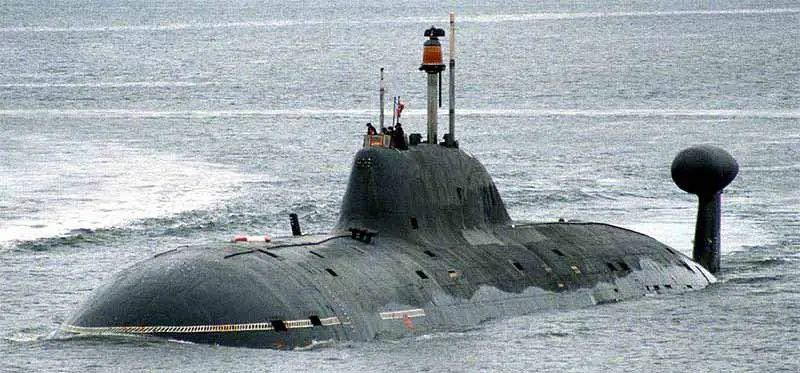
The AKULA class is a nuclear attack submarine built in Russia and operated by the Russian Navy and is in service since 1984 (one number is leased and operated by the Indian Navy as INS Chakra). The approximate length of this submarine is 110.3 meters and has an approximate displacement of 8140 tons (on the surface) and 8450 tons (submerged). The propulsion of the AKULA class submarine consists of a 32 MW steam turbine powered by one nuclear reactor. Also, there are two turbo-generators (2 MW). The approximate speed of this submarine is 10 knots (12 MPH) on the surface and 28 knots (32 MPH) while submerged, an approximate test depth of 480 meters or more, and the submarine can stay submerged underwater for 100 days. The AKULA class submarine is built with an inner pressure hull and an outer hull that is lighter than the inner hull.
References:

